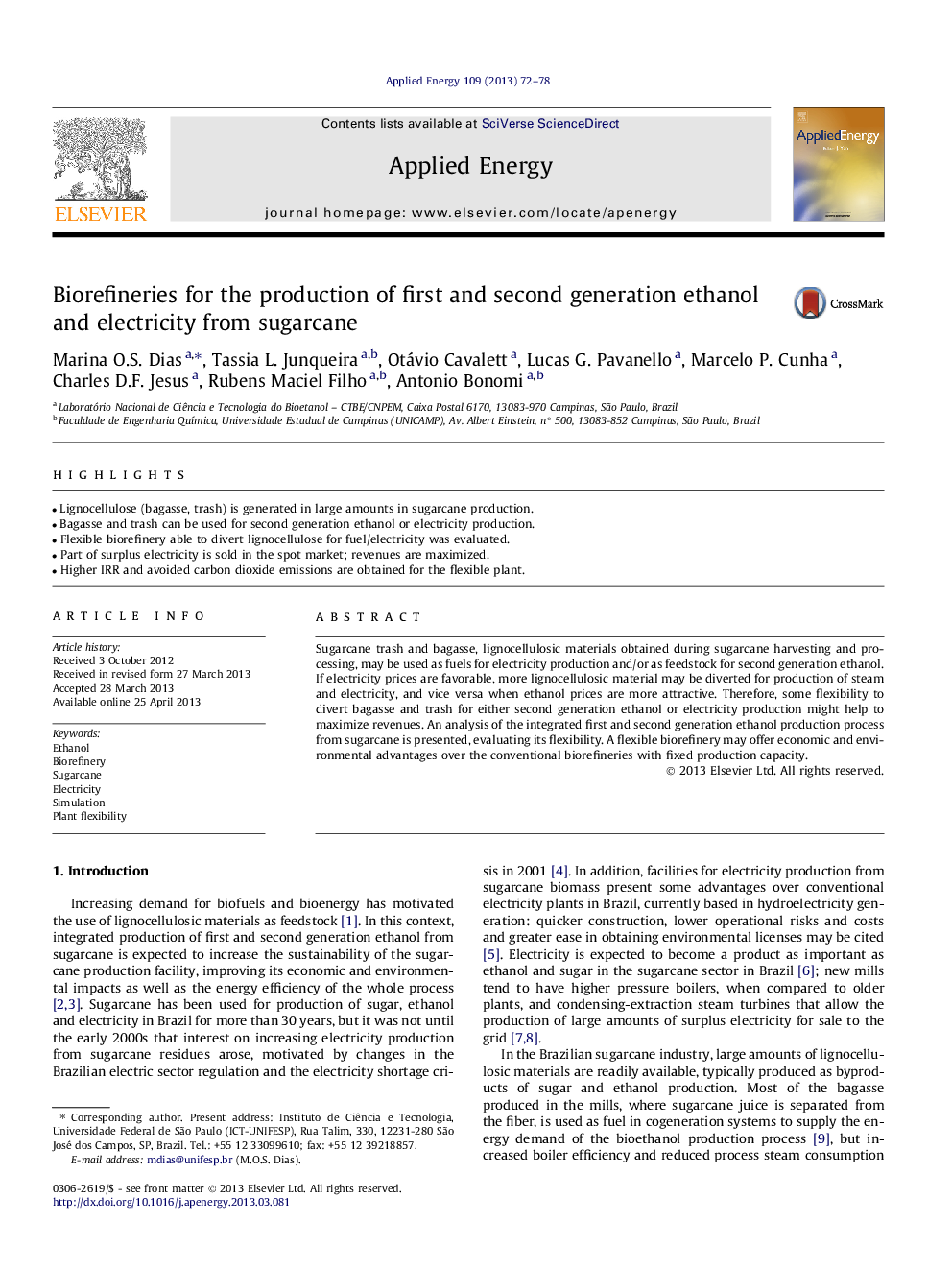| Article ID | Journal | Published Year | Pages | File Type |
|---|---|---|---|---|
| 243082 | Applied Energy | 2013 | 7 Pages |
•Lignocellulose (bagasse, trash) is generated in large amounts in sugarcane production.•Bagasse and trash can be used for second generation ethanol or electricity production.•Flexible biorefinery able to divert lignocellulose for fuel/electricity was evaluated.•Part of surplus electricity is sold in the spot market; revenues are maximized.•Higher IRR and avoided carbon dioxide emissions are obtained for the flexible plant.
Sugarcane trash and bagasse, lignocellulosic materials obtained during sugarcane harvesting and processing, may be used as fuels for electricity production and/or as feedstock for second generation ethanol. If electricity prices are favorable, more lignocellulosic material may be diverted for production of steam and electricity, and vice versa when ethanol prices are more attractive. Therefore, some flexibility to divert bagasse and trash for either second generation ethanol or electricity production might help to maximize revenues. An analysis of the integrated first and second generation ethanol production process from sugarcane is presented, evaluating its flexibility. A flexible biorefinery may offer economic and environmental advantages over the conventional biorefineries with fixed production capacity.
